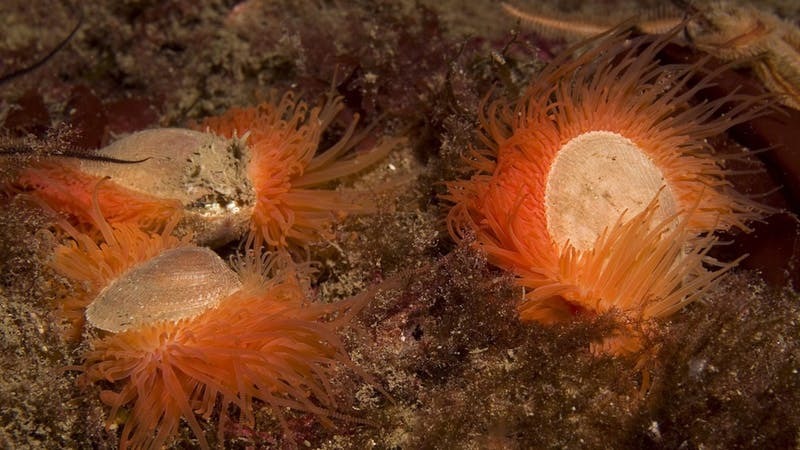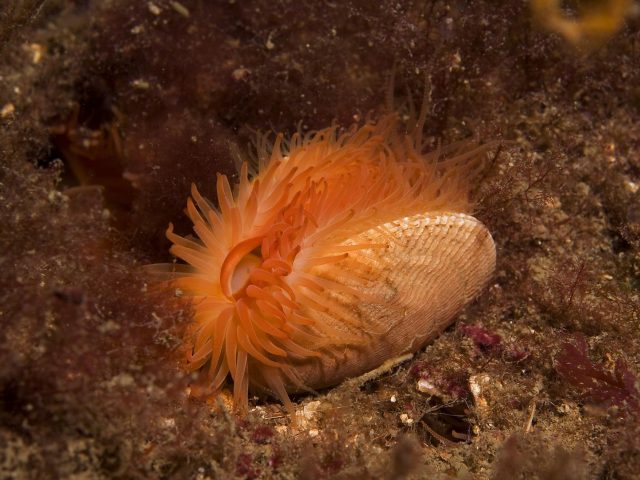
THE world’s largest known colony of a “brilliant but shy” species of shellfish has been discovered at the bottom of a loch.
Around 250,000,000 flame shells were found during survey works at Loch Carron in the Highlands, which is a Marine Protected Area (MPA).
It follows a 2012 discovery in Loch Alsh of a colony of more than 100,000,000 of the molluscs.
Dr Dan Harries, of Heriot-Watt University’s Institute of Life & Earth Sciences, who led the diving fieldwork, said: “This is another fantastic discovery. We really didn’t think we’d find a bed that could top the 100,000,000 find in Loch Alsh.
“This is a great example of partnership working across Government departments, Scottish Natural Heritage (SNH) and academia to deliver a timely and scientifically robust response.”
The world’s largest known colony of flame shells have been found living in nests which have merged to form a huge 185 hectare bed at the bottom of Loch Carron @strathearnrose @SNH_tweets @HeriotWattUni @marinescotland #blueplanet pic.twitter.com/AUsc0g2OoZ
— Scot Gov Greener (@GreenerScotland) December 27, 2017
Mike Cantlay, SNH’s chairman, added: “Scotland’s seas clearly still have many secrets left to tell.
“This is a remarkable discovery and I think we should be proud that our rich waters are so important to flame shells, and as our marine research and survey work continues to reveal, many other wonderful species too.”
Flame shells are small bivalve molluscs which have fiery orange tentacles and spend most of their lives hidden away inside nests.
A huge 185-hectare bed in the MPA has been formed by these nests, which have merged together.
The discovery was made by a SNH, Marine Scotland and Heriot-Watt University survey to learn more about creatures living in Loch Carron.
An MPA is designated on an urgent basis and lasts for a maximum of two years, but there are plans is to give Loch Carron the status permanently.
When announcing the designation, Environment Secretary Roseanna Cunningham launched a wider review of vulnerable habitats to identify where else management is needed to prevent further damage or loss.
Ms Cunningham said: “This is a fantastic discovery which shows that the new MPA is making an even more valuable contribution to safeguarding these waters than we first thought.
“I am determined to protect Scotland’s rich marine environment as this example shows the importance of considering how our seas are conserved beyond the MPA network.
“We are continuing to work with SNH to review the most vulnerable priority marine features in our coastal waters.”
Flame shell beds support a diverse community of other species, meaning protection of this habitat-building species conserves hundreds of other species and promotes local biodiversity.
However, they are extremely sensitive to physical disturbance, such as dredging.
Substantial and persistent declines have been observed, raising widespread concern about the conservation of this species and habitat it creates.

Enjoy the convenience of having The Sunday Post delivered as a digital ePaper straight to your smartphone, tablet or computer.
Subscribe for only £5.49 a month and enjoy all the benefits of the printed paper as a digital replica.
Subscribe